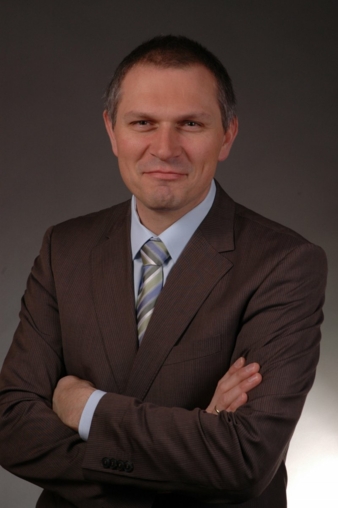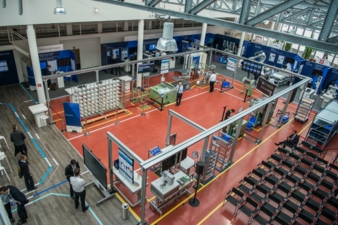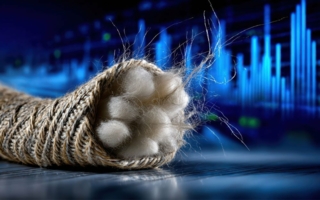02/09/2019 – Closing the gap and avoiding the ‘valley of death’ — auf Deutsch lesen
Research and Production companies
Most of the sixteen German textile research institutes formed research and production companies some years ago. Our four-part series provides answers from Aachen, Denkendorf, Greiz and Rudolstadt.
What do the institutions themselves get out of this and what do their customers say?
Anyone taking an interest in the subsidiary companies of these textile research institutions will initially be surprised at how different the companies are. Their breadth of interests ranges from large- or small-scale production lines and accredited testing and other services to research studies and market launch consultancy, in addition to classic transfer activities such as the prompt completion of industrial research contracts.
One of the new products from ITMA in Barcelona takes us straight to the point
An innovative fibre-feed technology that was introduced by a market leader in staple fibre spinning at the global trade fair for textile engineering in June, in conjunction with a brand-new spinning process. The underlying principle, which was developed by the Institute for Textile Technology (ITA) at RWTH Aachen University, was converted into a marketing-ready solution in response to an industrial contract awarded to ITA Technologietransfer GmbH – executed in cooperation with the customer, of course, and in accordance with its wishes.
ITA GmbH
ITA GmbH was, incidentally, the first company in the current ITA Group with a total of five associated partners alongside the Institute itself – was founded in 2007 and is tasked with fulfilling direct industry projects, and via its own incubator, with generating start-ups. The expertise of 30 employees is deployed to produce rapid problem-solving and market transfer.
Medical technology offers a current example of research transfer in the development of textile-based implants.
Together with her team, Dr Valentine Gesché, leader of the Exist-Research transfer project ‘PerAGraft’ based at the ITA, was very recently awarded the NRW Innovation Prize and a founder’s prize. PerAGraft involves implants individually tailored to the patient which, once market-ready and approved, are intended for use following complex aortic aneurysms.
Another example is offered by the Digital Capability Center (DCC) Aachen, a digital learning factory. The DCC team recently achieved 2nd place in the Digital Leader Awards. The DCC is operated by the ITA Academy, a subsidiary of ITA GmbH.
Since its foundation two years ago, it has worked with McKinsey to introduce some 3500 visitors to the digital world of Industry 4.0.
And where does ITA GmbH believe its particular strengths lie?
Marcus Beckmann, Director of ITA, says: “We think of ourselves as a development and transfer partner for industry throughout the textile chain – in the fields of chemical fibre technology, yarn and fabric production, composite fibre materials, medical textiles and textile engineering. In all of the specified fields, we are perfectly set up to take the project from conception to market, and are on top of all the relevant technologies.”





